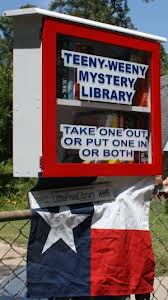This week's Sepia Saturday prompt photo is entitled "Rough Wooden Bridge over River,
Group with Dog on Shore." I very much liked the woman's back and found her the most
interesting figure in the photo. But where's the dog? Is that a partial mutt in the lower right corner....and is it...could it be, the dog's behind?? If so, why would the partial dog merit mention in the title and the boat with rowing occupants be overlooked? As usual, the photo is loaded with questions and food for thought, but I decided to take the easy path and tell the
 | |
| Hector with a few of his carvings. |
My grandfather Hector Fortier was a farmer and a carpenter. When they were in their eighties, my grandparents decided they'd had enough of hard farm work on the prairie and moved from Letellier, Manitoba into the city of Winnipeg to a tiny little house - one bedroom, one bathroom, a living room and kitchen.
Marriage to my grandmother was not for sissies and Hector launched a resistance trying to persuade her to co-exist with his funereal creation - to no avail. Finally, he did the next most practical thing you can do with a coffin - he turned it into a boat! With a nice coat of maroon paint you could hardly tell what was originally intended and we had many pleasant fishing trips on it.
 | |||||
| Hector in his "boat". |
As we froze in "Winterpeg" for much of the year, the family took advantage of every opportunity to get outdoors and enjoy the beach in the summer, in or out of the boat. This is a favorite beach photo of mine: my mother, me (blonde), my sister and Hector.
Despite the gloomy aspect of the coffin project, my grandfather was not a dour man - in fact, he seemed very happy to me. I'd say he was guilty only of planning a little too far ahead. Even if my grandmother Pulcherie hadn't vetoed the coffin, it would have languished in the garage for 15 years or so before he died at 95.
Some time after the coffin/boat incident, grandfather, always restless and inventive, began disassembling things to figure out how they worked. Unfortunately it was a one-way process and he'd forget how to put them back together. The TV, reduced to a pile of tubes and beyond redemption, had to be replaced; he started in on the car. That's when we began locking everything up.
Fortunately the formidable Pulcherie was able to keep Hector out of further trouble and outlived him by a few years, dying at 100 with most of her wits. Just before he died they celebrated their 75th anniversary.
 |
| Hector and Pulcherie in earlier years |
Check out more rowing/boating/bridge stories on Sepia Saturday:
Sepia Saturday




















.jpg)

















